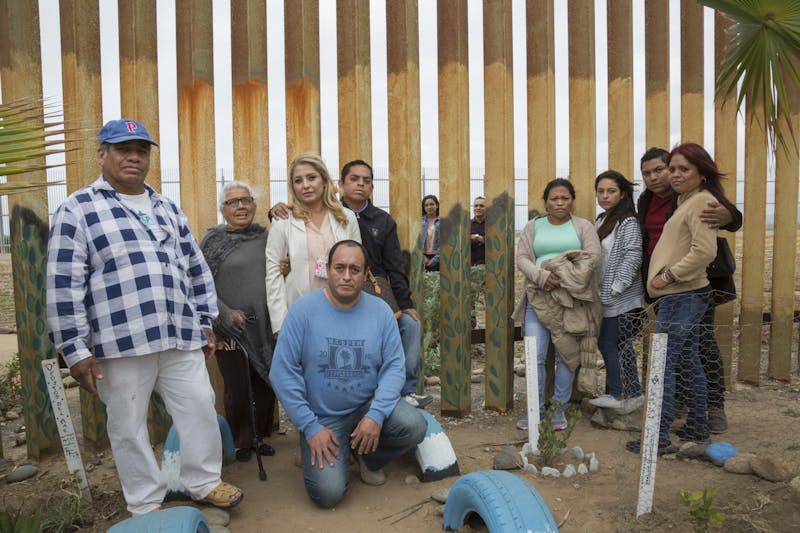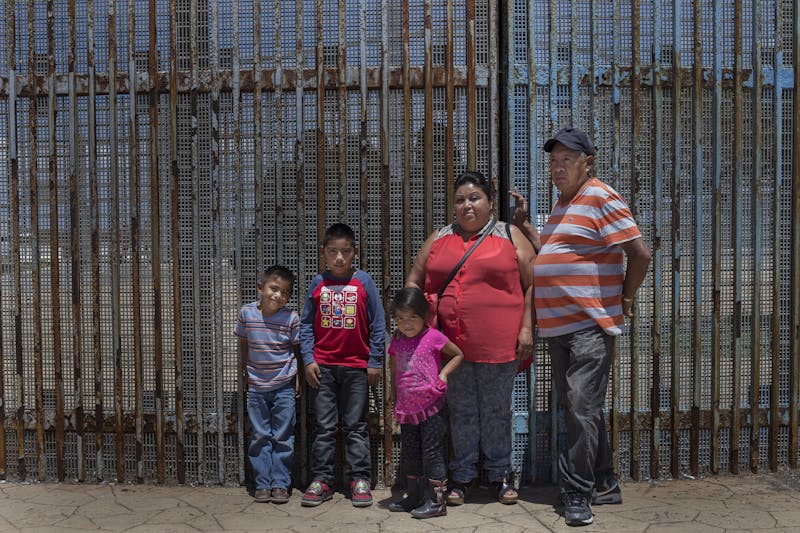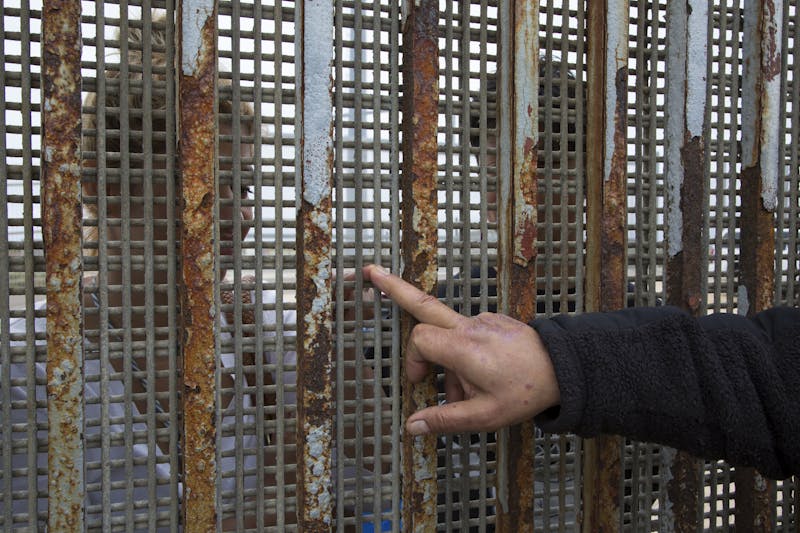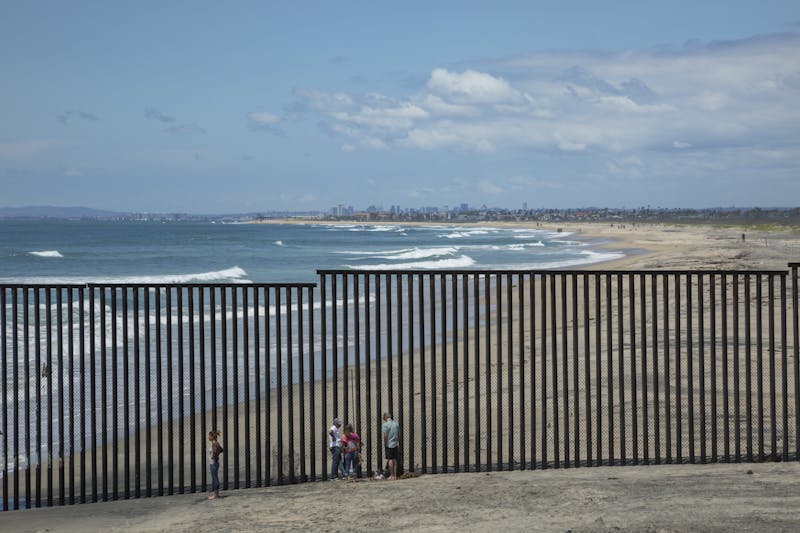Playas de Tijuana, a bustling Mexican beach town on the American border, has long been a place of reunion for immigrants and the families they left behind. In 1971, when Pat Nixon dedicated the Friendship Park there, the border wall was little more than a flimsy chain-link fence, and people could talk to their loved ones on the other side whenever they liked.
Today, the fence has been transformed into a hulking steel barricade, guarded by border patrol officers; reunions are limited to a handful of visiting hours on Saturdays and Sundays. Griselda San Martin, a Spanish photographer, has been documenting the park since 2013. She has watched a father sing to his young daughter through the wall, married couples pressed up against the metal slats, and children, now grown, filling their parents in on their own kids. “It’s surreal in a way,” San Martin says, “like visiting someone in prison.”
Roughly once a year, the towering steel gates in the wall are thrown open for a ceremony organized by the Border Angels, a nonprofit group in San Diego. Five or six families are ushered into a large steel paddock—a kind of no-man’s-land between two nations—where they are permitted to embrace for a few minutes. Then they must part once again, the gates closing behind them. Last year, Gabriela Esparza was among the immigrants selected to reunite with her family. Only eight years old when she crossed the desert into the United States, she was able to hug her mother, Maria, who remains in Mexico, for the first time in nine years. “It’s the most intense thing I’ve photographed,” San Martin says. “A single moment of joy—but then it’s back to reality, because they are not together.

Alejandra Vallejo visits her husband Daniel Armendariz at the border wall. The couple have been meeting on Saturdays and Sundays for roughly two months. Armendariz cannot leave the United States, and Vallejo does not have the documents to legally cross the border from Mexico.

Maria de Lourdes visits two of her children, Leslie and Cesar. Her husband and four children all live in California. When Leslie was eight, de Lourdes visited Mexico to attend her father’s funeral and has not been able to return to California. At the time this photo was taken, she had not seen her son Cesar for five years.

The Salgado family poses for a portrait. Cesar Salgado and his niece Giselle are on the American side of the fence. Cesar’s parents, siblings, and daughter (third from right) are on the Mexican side. This is the first time Cesar has seen his daughter in 14 years.

Carmen Morales, her husband Juventino Zacatzi, and her three grandchildren—Angel, 6, Christian, 8, and Sofia, 4—gather on the Mexican side of the wall. Behind them, on the American side, are two of her other grandchildren. They live in San Bernardino, California. It was the first time Morales had ever met the youngest, Crystal, 11.

Jose Marquez, 67, has been separated from his daughter Susanna for almost 15 years. They meet at the border wall every month.

Jose Marquez touches his daughter Susanna through the mesh barrier. They lived together in San Diego for 18 years before he was deported.
Marquez is joined by his Mariachi band to sing through the wall to his daughter Susanna, and to his grandson Johnny.

A view of downtown San Diego, only 20 miles north of Tijuana. The wall rises out of the Pacific Ocean, cuts across the beach, and continues along the border with Mexico for 654 miles.